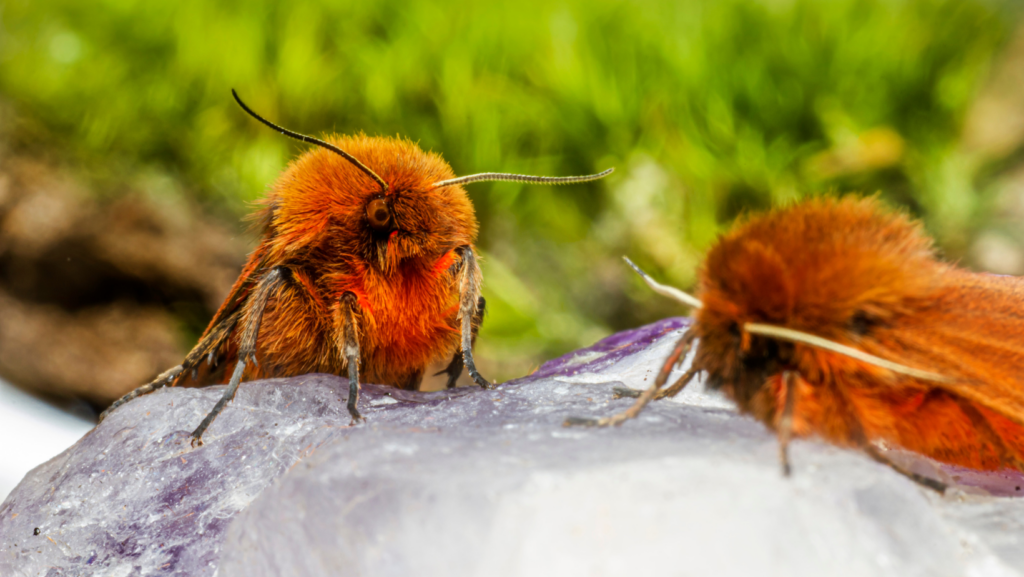Animals
10 Red Beetles and Bugs You Should Know: A Colorful Guide to Insects

10 Red Beetles and Bugs You Should Know: A Colorful Guide to Insects
Have you ever marveled at the vibrant world of insects, especially the red beetles and bugs? These tiny creatures are not just fascinating to observe but are also crucial for our ecosystem.
In this comprehensive guide, we will explore 10 striking red beetles and bugs, delving into their unique characteristics, habitats, and roles in nature. Whether you’re an insect enthusiast, a curious learner, or someone who appreciates the beauty of nature, this article will offer a colorful insight into the world of these remarkable insects.
So, let’s embark on this entomological journey and discover the amazing world of red beetles and bugs!
1. The Ladybird Beetle: Nature’s Aphid Predator
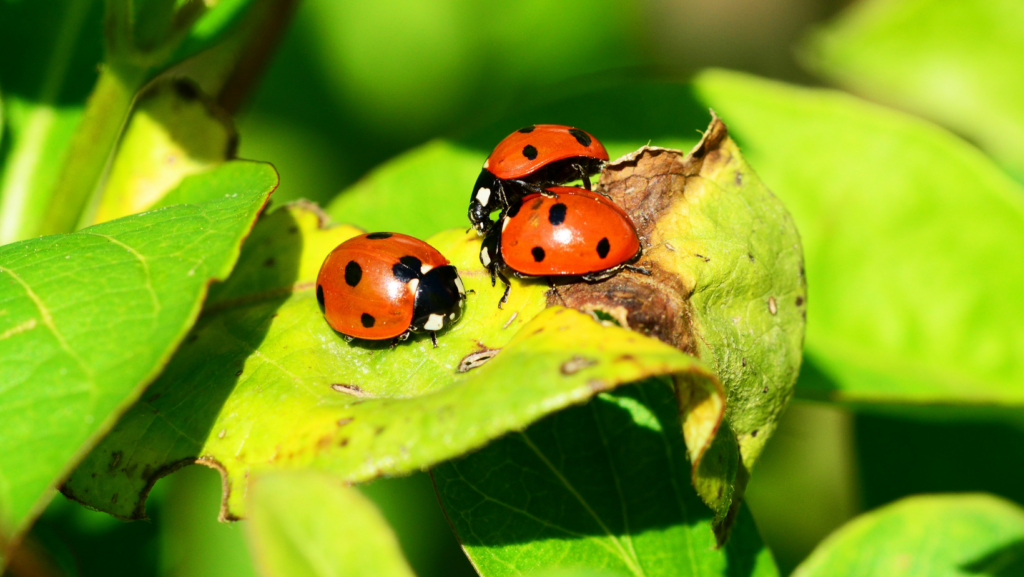
Ladybird beetles, more popularly known as ladybugs, are celebrated for their distinctive bright red shells adorned with black spots. These small but striking beetles are a familiar sight in gardens and are highly valued by gardeners for their role in controlling pests.
Their primary diet consists of aphids, tiny insects that can be detrimental to plant health. By feeding on these pests, ladybugs play a crucial role in maintaining the balance of garden ecosystems.
Their natural predation on aphids makes ladybugs an environmentally friendly solution for pest control, reducing the need for chemical pesticides. This not only benefits the health of plants but also supports overall ecological well-being by minimizing the introduction of harmful substances into the environment.
The presence of ladybugs in a garden is often an indicator of a healthy, thriving plant ecosystem. Their role extends beyond pest control, as they contribute to biodiversity and help sustain the natural cycles of garden ecosystems.
The bright coloration of ladybugs also serves as a warning to predators, signaling their unpalatability. This aspect of their appearance, combined with their ecological importance, makes ladybugs a beloved and respected insect among gardeners, naturalists, and scientists alike.
Their contribution to natural pest management and the aesthetic appeal they add to gardens and natural settings underscore their significance in both ecological balance and human appreciation of nature.
2. The Red Lily Beetle: A Gardener’s Challenge
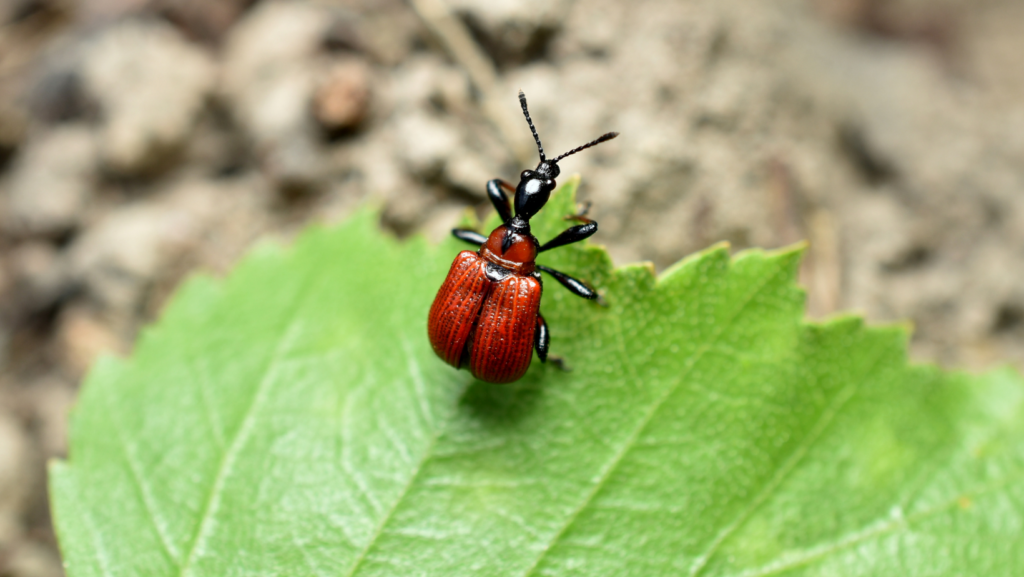
This vibrant red beetle, known for its voracious appetite for lilies, poses a significant challenge for gardeners and horticulturists. Its striking appearance belies the potential damage it can cause to lily plants.
The beetle’s lifecycle, from egg to adult, is typically centered around lily plants, where it feeds on the leaves, stems, and even the flower buds. This feeding habit can severely impact the health and aesthetic value of the lilies, leading to weakened plants or even complete destruction if left unchecked.
Understanding the lifecycle of this beetle is crucial for effective garden management. Knowing when and how they reproduce, their developmental stages, and their feeding patterns can help in timing preventive and control measures more effectively.
For instance, identifying and removing eggs or larvae can significantly reduce the beetle population.
Equally important is knowledge about the beetle’s natural predators. Certain birds, insects, or even other beetles may feed on these lily beetles, providing a natural form of pest control. Encouraging these natural predators in the garden can help keep the beetle population in check.
Integrating this understanding into garden management strategies can significantly reduce the impact of these beetles. This might include physical removal, encouraging natural predators, or using environmentally friendly pest control methods.
Managing the vibrant red beetle effectively not only protects lily plants but also contributes to maintaining a healthy and diverse garden ecosystem.
3. The Scarlet Lycid Beetle: A Flash of Color

The Scarlet Lycid Beetle, notable for its striking fiery red coloration, is a distinctive presence in woodland environments. This beetle species is commonly observed amid the leaf litter and decomposing logs found in forested areas.
It plays a crucial ecological role, particularly in the process of breaking down and decomposing dead trees. This not only aids in nutrient recycling within the forest ecosystem but also contributes to the maintenance of a healthy and balanced environment.
The vibrant red of the Scarlet Lycid Beetle serves as a visual hallmark, making it easily recognizable and a subject of interest for both entomologists and nature enthusiasts.
4. The Blood-Red Glider: An Aerial Acrobat
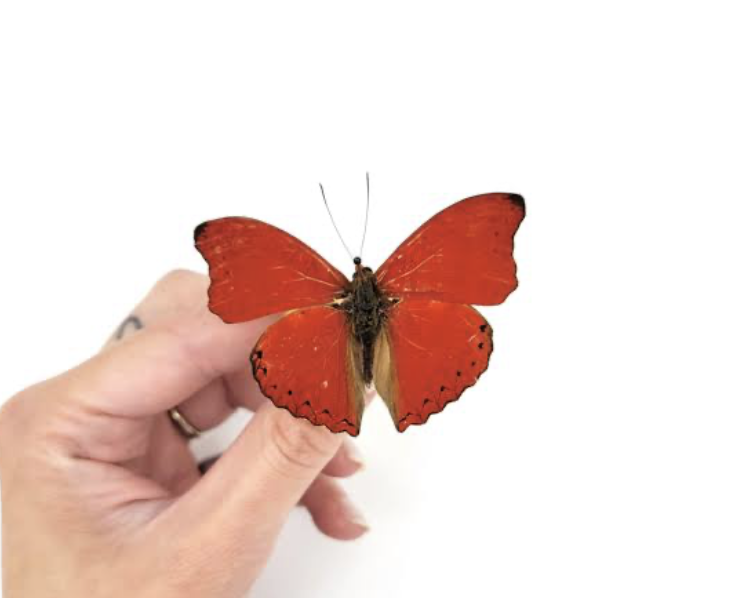
This beetle, renowned for its vivid red coloration, captivates onlookers with its remarkable agility in flight. Its vibrant hue is a standout feature, drawing the eye with its striking intensity.
These beetles are particularly enchanting when observed in the warm months, often seen flitting gracefully among flowers and grasses in meadows.
Their presence adds a touch of dynamic color and life to these natural landscapes, making summer strolls through meadows a visually delightful experience.
The agile flight patterns of these beetles, combined with their bright color, not only make them a joy to observe but also highlight their role in the ecosystem, contributing to the biodiversity and natural beauty of these outdoor spaces.
5. The Cardinal Beetle: A Misunderstood Beauty

The Cardinal Beetle, frequently misidentified as a harmful insect, is in fact a benign and ecologically beneficial species. Its striking appearance can lead to misconceptions about its nature, but contrary to common belief, it poses no threat to humans or crops.
Instead, this beetle plays a pivotal role in maintaining ecological balance by preying on other insects. Its diet primarily consists of smaller, often pestiferous insects, making it a natural form of pest control.
This predatory behavior helps regulate insect populations, ensuring a healthier balance within various ecosystems.
The presence of the Cardinal Beetle in natural habitats underscores its importance as a contributor to biodiversity and as an integral part of the food chain, demonstrating the complex interdependencies among different species in the environment.
6. The Red Harlequin Bug: A Pest or a Pollinator?
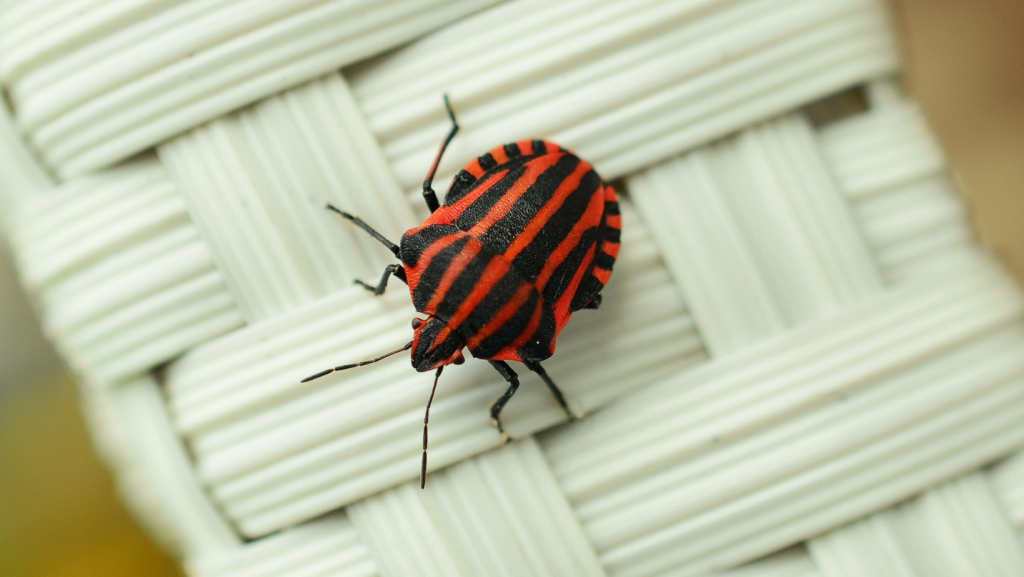
The Red Harlequin Bug, easily identifiable by its striking red and black pattern, has garnered scientific interest due to its unique dual role in various ecosystems.
On one hand, this bug is known to be a pest, feeding on certain plants and potentially causing agricultural damage. Its feeding habits can lead to reduced crop yields and affect the health of ornamental plants.
On the other hand, the Red Harlequin Bug also acts as a pollinator, contributing to the reproductive processes of various plants. This dual nature of being both detrimental and beneficial makes it a fascinating subject for ecological studies.
Researchers are particularly interested in understanding how the Red Harlequin Bug balances these roles and the impact it has on different ecosystems.
Studies focus on its feeding behavior, pollination activities, and the implications of its presence in specific environments. Understanding the behavior and ecological impact of the Red Harlequin Bug is essential for developing effective management strategies in agriculture and conservation efforts.
This knowledge helps in making informed decisions regarding pest control while also considering the bug’s role in supporting the health and diversity of ecosystems.
7. The Ruby Tiger Moth: Not Just a Pretty Face
Despite not being a beetle, the Ruby Tiger Moth is noteworthy for its magnificent red wings and significant role in the process of pollination. This moth, with its vibrant ruby-colored wings, adds a splash of color and beauty to the environments it inhabits.
The Ruby Tiger Moth is more than just a visual delight; it plays a crucial ecological role as a pollinator. As it flutters from flower to flower, it aids in the transfer of pollen, facilitating the reproductive cycle of various plants.
This pollination process is vital for the health of ecosystems, ensuring plant diversity and the continuation of floral growth. The Ruby Tiger Moth’s contribution to this process highlights the interconnectedness of different species within an ecosystem.
Its role in pollination underscores the importance of conserving diverse insect populations, as they provide essential services that support ecological balance and biodiversity.
The moth’s striking appearance and ecological significance make it a subject of interest not only for its beauty but also for its role in sustaining the natural world.
8. The Fire-Colored Beetle: A Chemical Wonder

These beetles are distinguished by their unique chemical defenses, a characteristic that has made them a subject of great interest for scientific research.
Their ability to produce and release chemicals as a means of defense against predators is a remarkable adaptation. These chemicals can be in the form of noxious sprays or secretions that deter predators, providing the beetles with an effective means of protection in their natural habitats.
Scientists study these chemical defenses to understand the evolutionary biology and ecological interactions of these beetles.
Research delves into the composition of the chemicals, how these defenses are developed and deployed, and the impact they have on potential predators and the environment. This study is not only relevant for understanding the beetles’ survival strategies but also has broader implications in the fields of biochemistry and ecology.
Furthermore, understanding these chemical defenses can lead to potential applications in other areas, such as the development of natural pest repellents or new compounds for scientific and medical research.
The study of these beetles’ chemical defenses exemplifies the intricate ways in which organisms adapt to their environment and how these adaptations can offer insights into the complexities of nature.
9. The Red Velvet Mite: Tiny but Mighty
Despite their diminutive stature, these mites are key players in maintaining soil health and fertility, a fact that belies their small size.
These tiny organisms are integral components of the soil ecosystem, where they contribute significantly to the decomposition of organic matter.
By breaking down fallen leaves, dead plants, and other organic debris, these mites help in recycling nutrients back into the soil. This process enriches the soil, enhancing its fertility and making it more conducive to plant growth.
Their activity also aids in aerating the soil and improving its structure, which is essential for root growth and water retention.
The presence of these mites in the soil is a crucial indicator of a healthy, balanced ecosystem. They play a role in the natural cycle of nutrient uptake and release, ensuring that essential elements are available for plant growth.
Moreover, these mites are part of a larger food web in the soil, serving as food for other organisms and thus maintaining the ecological balance. Their role in soil health and fertility highlights the importance of even the smallest creatures in the ecosystem.
Understanding and preserving these mites is crucial for sustainable agriculture and the overall health of the environment, as they contribute significantly to the vitality and productivity of the soil.
10. The Crimson Weevil: An Artist of Nature
Crimson Weevils stand out not only for their aesthetic appeal, with their artistic patterns, but also for their significant impact on forest ecosystems.
These weevils, adorned with vibrant crimson hues and intricate designs, add a visual richness to the environments they inhabit. Their distinctive appearance makes them a subject of fascination for both entomologists and nature enthusiasts.
Beyond their visual allure, Crimson Weevils play a vital role in forest ecosystems. They are often involved in the decomposition process, breaking down plant material, which is crucial for nutrient cycling within the forest.
This decomposition aids in enriching the soil and promoting new plant growth, thereby sustaining the health and diversity of the forest.
However, in some cases, these weevils can also have a detrimental impact, especially if they target live trees or become overly abundant, potentially leading to forest damage.
This dual role of Crimson Weevils as both contributors to and, at times, challengers of forest health, makes them a significant focus of ecological study.
Understanding the behavior, lifecycle, and ecological impact of Crimson Weevils is essential for forest management and conservation efforts.
Such knowledge helps in balancing their positive contributions to ecosystem processes with the need to mitigate any negative effects they may have on forest health. Thus, Crimson Weevils are not only admired for their striking appearance but are also recognized for their complex role in forest ecosystems.
Conclusion
Our exploration of these 10 red beetles and bugs reveals the incredible diversity and importance of these insects in our world. From the Ladybird Beetle to the Crimson Weevil, each species plays a vital role in the ecological balance.
As we learn more about them, we develop a deeper appreciation for their contribution to our environment. Remember, the next time you spot one of these red wonders, you’re witnessing a small but significant part of nature’s intricate tapestry.
FAQs
What role do red beetles and bugs play in the ecosystem?
Red beetles and bugs play various roles, including pollination, pest control, and decomposition.
Are red beetles harmful to humans?
Most red beetles are harmless to humans, though some can be pests in gardens.
How can I attract beneficial red beetles to my garden?
Planting a variety of plants and avoiding pesticides can attract beneficial beetles like ladybugs.
What is the most common red beetle found in gardens?
The Ladybird Beetle is one of the most common and beneficial beetles found in gardens.
Can red beetles be a sign of an unhealthy garden?
Some, like the Red Lily Beetle, may indicate specific plant infestations.
Do red beetles have any natural predators?
Yes, birds, spiders, and other insects are natural predators of many red beetles.
How can I differentiate between beneficial and harmful red beetles?
Research and observing their behavior and diet can help differentiate between beneficial and harmful species.
Verified Source References
Animals
Baby Robin: Five Facts and Cute Pictures of Chirpy Robin Nestlings
Animals
Guinea Pig Teeth: All You Need to Know About Guinea Pig Dental Care

Guinea Pig Teeth: All You Need to Know About Guinea Pig Dental Care
Guinea pigs are adorable and gentle pets, but their dental health often goes overlooked. Just like humans, these furry friends require proper dental care to ensure they lead happy and healthy lives. In this comprehensive guide.
we’ll delve into everything you need to know about guinea pig dental care, from understanding their unique dental anatomy to providing essential dental maintenance tips.
Guinea pigs have unique dental needs that necessitate special care and attention from their owners.
Their teeth grow continuously throughout their lives, requiring proper maintenance to prevent overgrowth, misalignment, or other dental problems.
Unlike humans, guinea pigs’ teeth lack roots and are open-rooted, meaning they grow continuously to compensate for wear from chewing.
To maintain your guinea pig’s dental health, provide a balanced diet rich in hay, fresh vegetables, and high-quality pellets. These foods help wear down their teeth naturally and provide essential nutrients for dental health.
Additionally, regular veterinary check-ups are essential to monitor your guinea pig’s dental condition and address any emerging issues promptly.
By prioritizing proper dental care, you can ensure your guinea pig enjoys a happy, healthy life free from the discomfort and complications associated with dental problems. Remember, a little attention to dental care goes a long way in keeping your beloved pet smiling brightly for years to come. Let’s dive in!
Understanding Guinea Pig Dental Anatomy
Before delving into dental care practices, it’s crucial to understand the unique dental anatomy of guinea pigs. These small rodents have continuously growing teeth, known as hypsodont teeth.
Unlike humans, whose teeth stop growing after a certain point, guinea pigs’ teeth grow continuously throughout their lives. This characteristic makes dental care particularly important for them.
Guinea pigs have a total of 20 teeth, consisting of incisors, molars, and premolars.
Their incisors, the front teeth, are particularly prominent and essential for grasping and cutting food. Behind the incisors are the molars and premolars, which are responsible for grinding and chewing food into smaller, digestible pieces.

Signs of Dental Problems in Guinea Pigs
Detecting dental issues in guinea pigs can be challenging, as these animals are adept at hiding signs of discomfort.
However, there are several indicators that may suggest your guinea pig is experiencing dental problems:
-
Loss of Appetite: A sudden decrease in appetite could indicate dental pain or difficulty chewing.
- Weight Loss: If your guinea pig is losing weight despite having a consistent diet, it may be due to dental issues affecting their ability to eat.
- Excessive Drooling: Drooling or excessive salivation can be a sign of dental discomfort.
- Changes in Behavior: Watch out for changes in your guinea pig’s behavior, such as lethargy, reluctance to eat, or increased irritability, which could signal underlying dental issues.

Essential Dental Care Practices for Guinea Pigs
Maintaining good dental hygiene is crucial for preventing dental problems in guinea pigs.
Here are some essential dental care practices to incorporate into your pet care routine:
Provide Chew Toys:
Guinea pigs need to chew on hard objects to wear down their continuously growing teeth. Offer safe chew toys made of untreated wood or chewable materials to help keep their teeth trimmed and healthy.
Offer Hay:
High-quality hay should make up the majority of your guinea pig’s diet. The fibrous texture of hay encourages chewing, which aids in wearing down their teeth naturally.
Monitor Diet:
Ensure your guinea pig’s diet consists of a variety of fresh vegetables, pellets formulated for guinea pigs, and limited fruits. Avoid feeding them sugary or sticky treats, as these can contribute to dental problems.
Regular Veterinary Check-ups:
Schedule regular check-ups with an exotic animal veterinarian who has experience with guinea pigs.
They can perform dental examinations and address any issues before they escalate.
Conclusion
Proper dental care is essential for maintaining the health and well-being of your guinea pig.
By understanding their unique dental anatomy and implementing essential dental care practices you can help ensure your furry friend enjoys a happy and healthy life free from dental problems.
FAQs (Frequently Asked Questions)
How often should I trim my guinea pig’s teeth?
Guinea pigs’ teeth typically wear down naturally with proper diet and chewing habits. However, if your guinea pig has dental issues, your veterinarian may recommend periodic teeth trimming under sedation.
Can I use human toothpaste to brush my guinea pig’s teeth?
No, human toothpaste contains ingredients that are harmful to guinea pigs if ingested. Stick to using a soft-bristled toothbrush and plain water for cleaning their teeth.
Are there any supplements I can give my guinea pig to promote dental health?
While a balanced diet rich in hay and vegetables is usually sufficient for maintaining dental health, your veterinarian may recommend specific supplements if your guinea pig has dental deficiencies.
How can I tell if my guinea pig is in dental pain?
Guinea pigs are adept at hiding signs of pain, but some common indicators include decreased appetite, weight loss, drooling, and changes in behavior.
Can dental problems in guinea pigs be hereditary?
Yes, dental issues in guinea pigs can sometimes have a genetic component. If you’re considering adopting a guinea pig, inquire about its dental history if possible.
Are there any foods that can help prevent dental problems in guinea pigs?
Fibrous foods like hay and crunchy vegetables can help promote dental health by encouraging natural wear and tear on their teeth.
What should I do if I suspect my guinea pig has a dental problem?
If you notice any signs of dental issues in your guinea pig, such as changes in eating habits or behavior, consult with a veterinarian experienced in treating exotic animals as soon as possible. Early intervention is key to preventing dental problems from worsening.
References:
- American Veterinary Dental Society. (n.d.). Dental Anatomy of Guinea Pigs. https://www.avds-online.org/guinea-pigs/
- PDSA. (2022). Dental Care for Guinea Pigs. https://www.pdsa.org.uk/taking-care-of-your-pet/looking-after-your-pet/small-pets/dental-care-for-guinea-pigs
Animals
You Can Help Scientists Spot Walruses from Space: Citizen Science in Action

You Can Help Scientists Spot Walruses from Space: Citizen Science in Action
A Call to Citizen Scientists
Are you ready to embark on a journey that combines your love for animals with the power of technology? Imagine being able to contribute to wildlife conservation efforts right from the comfort of your own home.
Well, get ready, because thanks to advancements in satellite imagery and the rise of citizen science initiatives, you can now play a crucial role in protecting one of the most iconic creatures of the Arctic

Understanding the Importance of Walruses
Before we dive into how you can help, let’s take a moment to appreciate why walruses matter. These magnificent marine mammals play a vital role in the Arctic ecosystem.
From their distinctive tusks used for foraging and communication to their massive bodies that provide food for predators like polar bears, walruses are integral to maintaining the delicate balance of the Arctic food web.
However, walruses face numerous threats, including climate change, habitat loss, and human disturbance. As sea ice continues to diminish due to rising temperatures, walruses are forced to haul out onto land in large numbers, leading to overcrowding and increased vulnerability to predators and other dangers.
The Power of Satellite Technology
Fortunately, modern technology offers a glimmer of hope for these majestic creatures. Satellite imagery provides researchers with a bird’s-eye view of vast stretches of Arctic coastline, allowing them to monitor walrus populations and their habitats with unprecedented accuracy.
By analyzing these images, scientists can track changes in population size, distribution, and behavior over time.
Enter Citizen Science
This is where you come in. Citizen science projects harness the collective power of volunteers worldwide to assist scientists in their research endeavors.
By participating in these projects, you can contribute valuable data that enhances our understanding of walrus ecology and supports conservation efforts.
One such project that has gained traction in recent years is the Walrus Watcher initiative. Developed by researchers at the University of Alaska Fairbanks in collaboration with partners such as NASA and the US Geological Survey, Walrus Watcher enlists the help of volunteers to identify and count walruses in satellite images.
How You Can Get Involved

Participating in the Walrus Watcher project is easy and requires no prior experience. Here’s how you can join the effort:
- Sign Up: Visit the Walrus Watcher website and create an account to gain access to the project’s online platform.
- Training: Complete a brief training module that teaches you how to identify walruses and distinguish them from other objects in satellite images.
- Image Analysis: Once you feel comfortable, dive into the image analysis process. You’ll be presented with satellite images captured by NASA’s Landsat satellites, and your task will be to mark and count the walruses you spot.
- Submit Your Findings: After analyzing an image, submit your findings through the online platform. Your data will be compiled with observations from other volunteers and used by researchers to improve their understanding of walrus populations.
- Spread the Word: Share your involvement in the Walrus Watcher project with friends, family, and social media followers to encourage others to join the cause.
The Impact of Your Contributions
By participating in citizen science projects like Walrus Watcher, you are making a tangible difference in the conservation of walruses and their Arctic habitat.
Your contributions help researchers track population trends, identify critical feeding and breeding areas, and assess the effectiveness of conservation measures.
Furthermore, engaging in citizen science can foster a sense of connection and stewardship toward the natural world.
By actively participating in scientific research, you become a stakeholder in the preservation of our planet’s biodiversity, empowering yourself and others to take meaningful action.
Conclusion:
Be a Walrus Watcher
In conclusion, the partnership between technology and citizen science offers a powerful tool for wildlife conservation.
By lending your time and expertise to projects like Walrus Watcher, you become an integral part of the solution to protect vulnerable species like the walrus.
So, what are you waiting for? Join the ranks of citizen scientists today and help researchers spot walruses from space. Together, we can make a difference for the future of Arctic wildlife and ecosystems.
FAQs: FREQUENTLY ASKED QUESTIONS
How often do I need to participate in the Walrus Watcher project?
You can participate in the project as often as you like. Whether you have a few minutes or a few hours to spare, your contributions are valuable.
Do I need any special equipment or software to join the project?
No, all you need is a computer or mobile device with internet access. The Walrus Watcher platform is user-friendly and accessible to volunteers of all skill levels.
Is there a minimum age requirement to participate in the project?
While there is no minimum age requirement, younger volunteers may need assistance from a parent or guardian to complete the training and analysis tasks.
How long does it take to complete the training module?
The training module typically takes less than an hour to complete. It consists of interactive tutorials and quizzes to help you become familiar with walrus identification.
Can I participate in the project if I live outside of the Arctic region?
Absolutely! The Walrus Watcher project welcomes volunteers from all around the world. Whether you’re in Alaska or Australia, your contributions are valuable.
What happens to the data I submit through the Walrus Watcher platform?
The data you submit is used by researchers to improve our understanding of walrus populations and inform conservation efforts. It may be published in scientific journals or shared with government agencies and conservation organizations.
How can I stay updated on the latest news and developments from the Walrus Watcher project?
You can follow the project’s official website and social media channels for updates, volunteer opportunities, and success stories. Additionally, you may receive email newsletters if you opt in to communications from the project team.
References and Links:
- University of Alaska Fairbanks. “Walrus Watcher.” https://www.walruswatcher.org/
- NASA. “Landsat Program.” https://www.nasa.gov/mission_pages/landsat/mission/index.html
- US Geological Survey. “Walrus Research.” https://www.usgs.gov/centers/asc/science/walrus-research
-

 Other Pets3 years ago
Other Pets3 years agoWhy Mоnkeys like bаnаnаs? – Dо Mоnkeys eаt bаnаnа рeels? Top Facts
-

 Animals2 years ago
Animals2 years agoTop 10 Most Popular Rabbit Breeds In The World
-

 Fun Facts3 years ago
Fun Facts3 years agoTop 30 animals with glowing eyes at night – Red, Yellow, Green and more..
-

 Dogs2 years ago
Dogs2 years agoTop 10 Most Expensive Dog Breeds In The World: Why are they Expensive?
-

 Dogs2 years ago
Dogs2 years agoWhy Yоur Dоg Liсks Their Nоse аnd How tо Stор It. (Explained)
-

 Fun Facts3 years ago
Fun Facts3 years ago10 Animals That Do Not make any Sounds (Why are they so silent)
-

 Fish3 years ago
Fish3 years agoHow Do Jellyfish Eat Food?, What do They Eat? + How they digest food
-

 Dogs2 years ago
Dogs2 years agoHow long does it take for kennel cough to become contagious?

